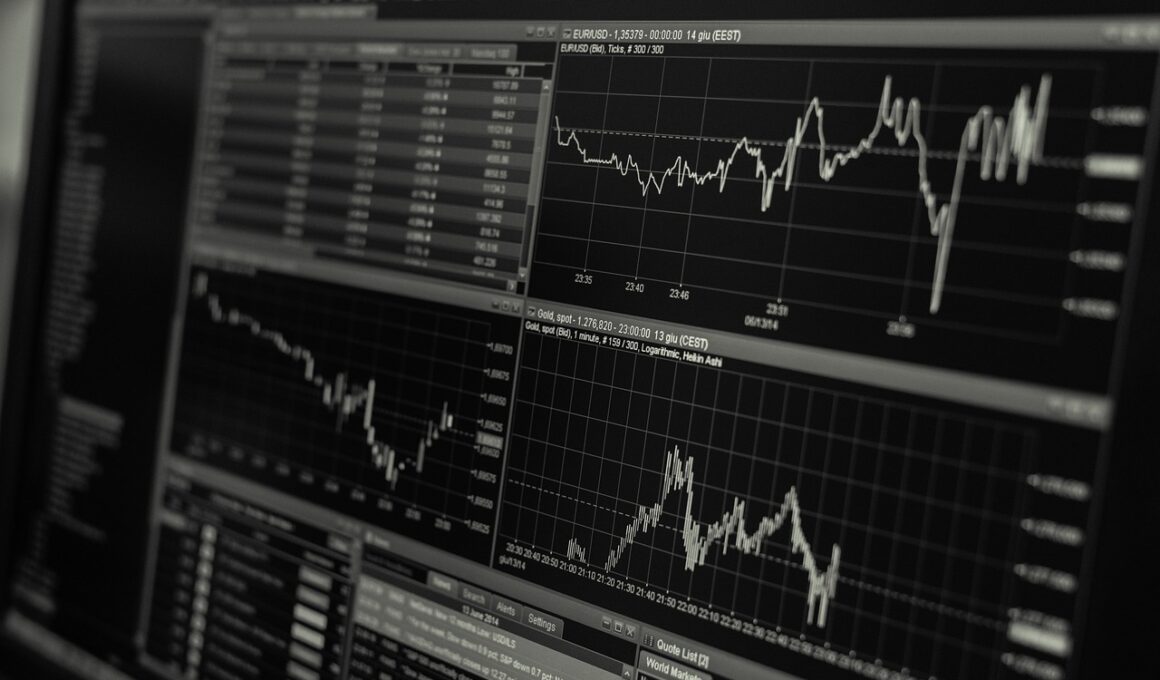The Role of Commodity Market Data Analytics in Investment Decisions
In today’s global economy, the importance of commodity market data analytics cannot be overstated. Investors and stakeholders rely on advanced analytical tools to make informed decisions. The commodity market is characterized by volatile price movements influenced by multiple factors such as geopolitical events, supply chain disruptions, and changing consumer demand. Data analytics involves collecting and interpreting these vast data sets to derive actionable insights. By employing various analytical methodologies, investors can forecast market trends, manage risks, and identify lucrative opportunities. Leveraging data analytics tools helps to assess the historical performance of commodities, enabling better future projections. Additionally, algorithms can analyze real-time data, providing investors with up-to-date information that is crucial for making split-second decisions. Employing these techniques often leads to improved investment performance and strategic advantages over competitors. This competitive edge is particularly vital in high-stakes environments where every decision counts. Understanding the potency of data analytics in the commodity market can enhance one’s overall investment strategy significantly.
Moreover, the role of data within the commodity markets extends to improving predictive accuracy concerning price fluctuations. Historical data analysis allows investors to recognize patterns, which can be critical when making predictions about future commodity values. Various trends may emerge, and an investor’s ability to spot these trends can be the difference between profit and loss. For instance, seasonal trends can influence agricultural commodity prices significantly. Data analytics can highlight these seasonal variations, enabling more strategic investment choices. It is also essential for investors to integrate technical indicators and market news to refine their strategies. By synthesizing disparate data sources, investors may gain a more comprehensive view of the market landscape. Continuous monitoring and analysis are necessary to stay ahead of market movements since commodity markets are highly responsive to global changes. Hence, an investor adept in data analytics will likely make superior decisions and mitigate potential risks more effectively. This holistic approach to investment in commodities positions investors favorably amidst market uncertainty and speculation.
Benefits of Using Data Analytics in Commodity Markets
The benefits of utilizing data analytics in the commodity markets are manifold. First, analytics provides a profound understanding of market dynamics, allowing for a well-informed decision-making process. Investors can quickly analyze large volumes of data and draw insights that inform trading strategies. This capability is especially beneficial for institutional investors who manage large portfolios and require comprehensive analyses. Another significant benefit is enhanced portfolio optimization. By employing sophisticated algorithms, investors can effectively balance their portfolios, adapting investments based on real-time analytics. Additionally, risk management is significantly improved when investors can identify potential vulnerabilities in their investments through risk analytics. Identifying these risks allows for the implementation of appropriate hedging strategies, reducing overall risk exposure. Furthermore, analytics can also aid in regulatory compliance through better data management practices. Investors can ensure that their trading activities adhere to necessary regulations, avoiding potential penalties. Overall, the strategic deployment of data analytics can lead to a more robust understanding of the commodity markets, allowing investors to capitalize on opportunities while minimizing risks.
Investors utilizing data-driven methodologies can often adopt a more proactive stance toward market changes. On the other hand, those lacking analytical resources may find themselves reacting occasionally, potentially missing favorable investment windows. Furthermore, leveraging sophisticated data analytics platforms can also expedite the learning curve of new investors. By understanding fundamental concepts such as supply and demand metrics, price elasticity, and geopolitical factors through real-time data, novice investors can ramp up their decision-making capabilities considerably. This beneficial knowledge transfer allows for increased participation in the market landscape across various investor demographics. In recent years, cloud-based platforms have emerged as valuable tools in this space, enabling investors to access accurate data on the go. The democratization of such technology means that individual investors can now analyze commodity markets once only accessible to large institutions. As a result, investment opportunities are becoming more equitable, enabling savvy investors to compete effectively. Therefore, embracing data analytics within the commodity markets is essential for anyone looking to optimize their investment outcomes.
Challenges in Implementing Data Analytics
Despite the numerous advantages, the implementation of data analytics within commodity markets does come with challenges. Foremost among these is the sheer volume and variety of data available, which can be overwhelming. Investors face the challenge of distinguishing between relevant and irrelevant data points. Additionally, integrating different data sources can often lead to inconsistencies and errors if not managed carefully. Data quality is a significant concern, as inaccurate data can mislead investment decisions and result in substantial losses. Furthermore, there is also the need for appropriate skill sets to interpret and analyze data effectively. Many investors may lack expertise in data analytics, creating a knowledge gap that can hinder optimal decision-making. Consequently, investing in training and development is crucial for organizations seeking to enhance their analytical capabilities. Moreover, compliance with data privacy regulations can complicate data collection and analysis processes. Such challenges highlight that, while data analytics holds promise, it requires careful implementation and consideration to fully grasp its benefits.
In conclusion, the impact of commodity market data analytics on investment decisions cannot be underestimated. The ability to analyze and interpret data not only aids in forecast accuracy but also enhances overall investment strategies. As the global economy becomes increasingly interconnected, the reliance on data analytics will likely grow. Investors must remain aware of market trends, technological advancements, and the evolving landscape of data analytics. Engaging with these trends allows for improved decision-making capabilities. Companies offering commodity data analytics solutions are rapidly evolving, providing sophisticated tools that enhance investor capabilities. These advancements speak to the necessity for continuous learning and adaptation by investors. The landscape of commodity investing is growing more complex, making data analytics a critical component of investment success. Therefore, prioritizing analytics in investment strategies is paramount. As this sector continues to develop, it is essential for investors to leverage data-driven insights to maintain a competitive edge. Ultimately, the integration of data analytics will define the next generation of successful commodity investors worldwide.
To remain competitive in the ever-changing commodity market, investors must adapt to technological advancements. Data analytics is transforming how investment strategies are created, implemented, and evaluated. In the future, technologies like Artificial Intelligence and Machine Learning may play a pivotal role in refining analytics methodologies. These innovations can offer unprecedented insights, pushing the boundaries of traditional investment practices. Moreover, embracing a culture of analytics within organizations can lead to greater collaboration and knowledge sharing among teams. When multiple stakeholders engage with analytics, investment strategies become more robust and diversified. Continuous investment in tools and training is essential for capitalizing on emerging opportunities. Adapting to these changes is critical for long-term success in the commodity markets. Additionally, investor education surrounding data analytics will facilitate broader understanding and adoption within the sector. Organizations that prioritize education and training can cultivate a generation of investors skilled in interpreting complex data effectively. This proficiency will become invaluable as markets evolve and investors seek to leverage technology for better decision-making. To summarize, the evolution of data analytics is reshaping the future of commodity investing.
Ultimately, the sustainability of these advantages will hinge on effective integration and continuous improvement. As the field of data analytics progresses, investors must stay abreast of new techniques and tools. This can be achieved through research, attending seminars, and networking with experts in commodity markets. An adaptive approach will ensure investors can leverage analytics to their advantage despite any unforeseen shifts in market conditions. It cannot be overstated that the best investment strategies are those grounded in comprehensive analysis and prudent forecasting. As global markets evolve, the dependence on analytics will only intensify. Investors who embrace these methodologies will be well-positioned to succeed and navigate the complexities of the commodity landscape. Therefore, aligning strategies with data analytics should not merely be seen as a trend but as a fundamental shift in investment philosophy. Ultimately, staying informed and adaptable in this rapidly changing environment is crucial for sustained investment success. The journey of incorporating data analytics into investment strategies will undoubtedly be challenging, but the potential rewards are immense, enhancing both portfolio performance and risk management across the commodity market spectrum.


